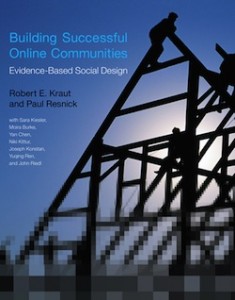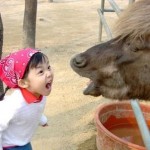 The 2014 instalment of the VIRCOMM conference was the first to be organised by up-and-coming community management consultancy FeverBee, founded by the energetic Richard Millington. The theme this year was the science of community management, rather than providing a more general view of the state of play in the area, as found in previous years, when eModeration took the hosting role.
The 2014 instalment of the VIRCOMM conference was the first to be organised by up-and-coming community management consultancy FeverBee, founded by the energetic Richard Millington. The theme this year was the science of community management, rather than providing a more general view of the state of play in the area, as found in previous years, when eModeration took the hosting role.
The opening keynote from Mine That Data‘s President Kevin Hillstrom got thing off to a slightly depressing start, pinpointing the many problems people in community and social media management roles face when trying to justify their value, but not really providing many solutions. Socia media campaigns received particularly negative attention for their inability to provide concrete returns. Successful social campaigns from Dell and Coke didn’t translate into product sales, and Lady Gaga’s last album flopped despite 50 million followers on social media. Nokia has halved its share despite being a top-ten player in social media. The only resort for the embattled social media manager appeared to be underlining the use of social media data as a guideline for customer interest in future product development, which seemed a bit desperate.
 The Summit then broke into parallel streams, with Paul Resnick of the University of Michigan School of Information taking the session I intended. Resnick’s book with Robert Kraut Building Successful Online Communities: Evidence-Based Social Design was actually included in the goodie bag provided to all attendees, and formed the basis of his talk. Richard Millington reckons this is the best book on the science of community management currently available, and I would have to agree that its design principles are comprehensive, backed with extensive research, and provide a great grounding for anyone who is serious about building successful communities online, be they hosted in traditional forums or via social media websites. Resnick’s book and presentation style are dry and academic, but that is something the field needs for a professional approach. When the last essential work in the area, Amy Jo Kim’s Community Building on the Web, is now over a decade old, we need more recent cornerstones, particularly ones that readdress issues in the light of the dominance of Twitter, Facebook, and now WhatsApp and Snapchat. Sherry Turkle’s Alone Together and danah boyd’s It’s Complicated provide great insight, but not necessarily scientifically backed strategies for action.
The Summit then broke into parallel streams, with Paul Resnick of the University of Michigan School of Information taking the session I intended. Resnick’s book with Robert Kraut Building Successful Online Communities: Evidence-Based Social Design was actually included in the goodie bag provided to all attendees, and formed the basis of his talk. Richard Millington reckons this is the best book on the science of community management currently available, and I would have to agree that its design principles are comprehensive, backed with extensive research, and provide a great grounding for anyone who is serious about building successful communities online, be they hosted in traditional forums or via social media websites. Resnick’s book and presentation style are dry and academic, but that is something the field needs for a professional approach. When the last essential work in the area, Amy Jo Kim’s Community Building on the Web, is now over a decade old, we need more recent cornerstones, particularly ones that readdress issues in the light of the dominance of Twitter, Facebook, and now WhatsApp and Snapchat. Sherry Turkle’s Alone Together and danah boyd’s It’s Complicated provide great insight, but not necessarily scientifically backed strategies for action.
 After lunch, I chose the talk on the psychology of online motivation by self-styled Web Psychologist and decidedly dynamic Nathalie Nahai. Hers was an engaging talk, almost the converse of Resnick’s, with slick imagery and easily digested calls to action. It seemed slightly out of place at VIRCOMM, and would have felt right at home as a TED talk or at SXSW. But at least it illustrated how community management has room for exhuberance and a future beyond people trying to maintain forum communities whilst the Facebook billions sweep all before them.
After lunch, I chose the talk on the psychology of online motivation by self-styled Web Psychologist and decidedly dynamic Nathalie Nahai. Hers was an engaging talk, almost the converse of Resnick’s, with slick imagery and easily digested calls to action. It seemed slightly out of place at VIRCOMM, and would have felt right at home as a TED talk or at SXSW. But at least it illustrated how community management has room for exhuberance and a future beyond people trying to maintain forum communities whilst the Facebook billions sweep all before them.
Following Nahai, Jack Wallington of The Student Room gave a compelling talk on how user testing was used on his site to optimise the first month of the membership funnel. This included simple but effective methods of redesigning signup forms and engaging users to participate in discussion. The Student Room is a vibrant and successful online community, so it was great to see these concrete examples. In particular, the idea that you could give users the chance to write a post first and then be led to register as part of the process looke like a potentially very effective strategy, and had proven to be so according to Wallington’s own registration figures.
 The closing keynote from Dr Michael Wu of market-leading Lithium Technologies proved highly engaging, although it felt slightly like a teaser for his session in the following day’s intensive seminar programme. Cutting a dapper image in shiny suit and flat cap, Wu began by citing the now infamous Dunbar Number, which states that human brain evolution means that the average person can only maintain approximately 150 relationships with other people at a time, explaining why this was the usual size of communities before the advent of bureaucratically managed cities. It also happens to be the average number of friends people have on Facebook. Wu provided some indirect answers to Hillstrom’s opening keynote, arguing that scaling social media communities was easier than sustaining their engagement, which goes some way to explaining why Lady Gaga’s last album didn’t sell so well. Looking at the difference between strong and weak ties, citing Geoffrey Moore’s Four Gears model and Granovetter’s analysis of the effects of tie strength. Facebook’s facility for building strong ties was used to explain why it’s not proven to be so good for building weak ties with brands.
The closing keynote from Dr Michael Wu of market-leading Lithium Technologies proved highly engaging, although it felt slightly like a teaser for his session in the following day’s intensive seminar programme. Cutting a dapper image in shiny suit and flat cap, Wu began by citing the now infamous Dunbar Number, which states that human brain evolution means that the average person can only maintain approximately 150 relationships with other people at a time, explaining why this was the usual size of communities before the advent of bureaucratically managed cities. It also happens to be the average number of friends people have on Facebook. Wu provided some indirect answers to Hillstrom’s opening keynote, arguing that scaling social media communities was easier than sustaining their engagement, which goes some way to explaining why Lady Gaga’s last album didn’t sell so well. Looking at the difference between strong and weak ties, citing Geoffrey Moore’s Four Gears model and Granovetter’s analysis of the effects of tie strength. Facebook’s facility for building strong ties was used to explain why it’s not proven to be so good for building weak ties with brands.
VIRCOMM did feel different this year compared to last year’s event, which seemed to be struggling with the problem posed by social networking to the traditional role of the community manager. However, whilst the 2014 summit managed to cast off the sense that perhaps this was an area trying to survive from the 1990s, it didn’t go far enough with the science, and perhaps it can’t. Resnick’s work shows some clear principles for building and maintaining communities, but online behaviour is defined by its high unpredictability. Nobody foresaw the rise of Facebook, probably not even Mark Zuckerberg himself. What really makes communities explode can be as unpredictable as the meteoric rise in interest for PSY’s Gangnam Style video on YouTube, or the decidedly bizarre What Did the Fox Say? last year. We’re still trying to figure out what leads people to coalesce online, and maybe we always will be.
Related articles
Related Posts













